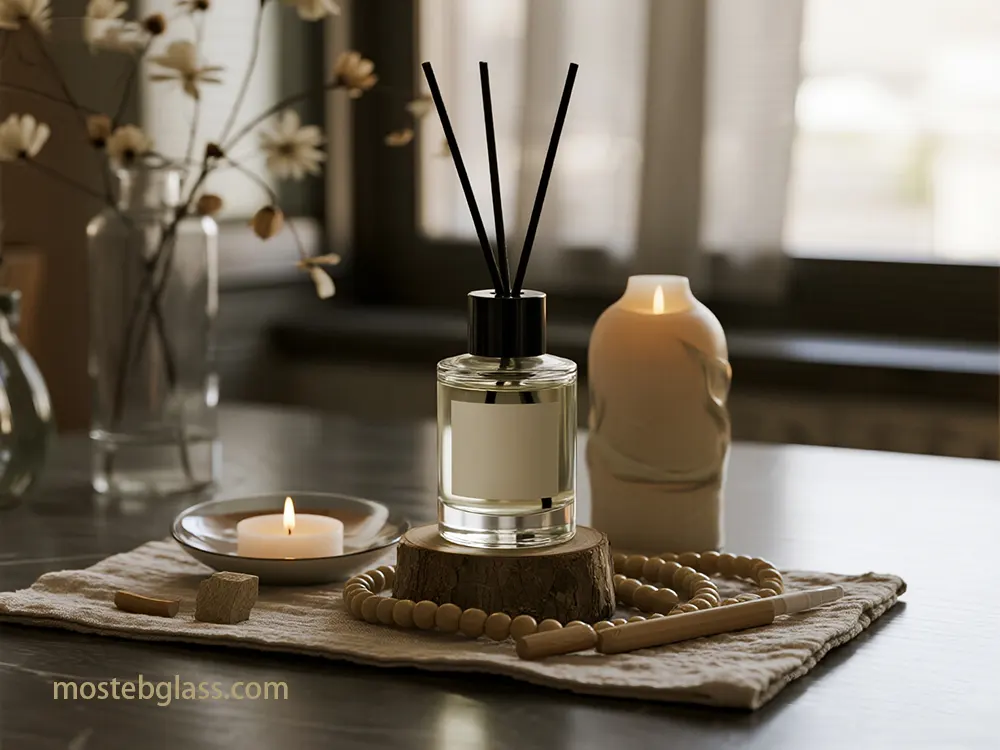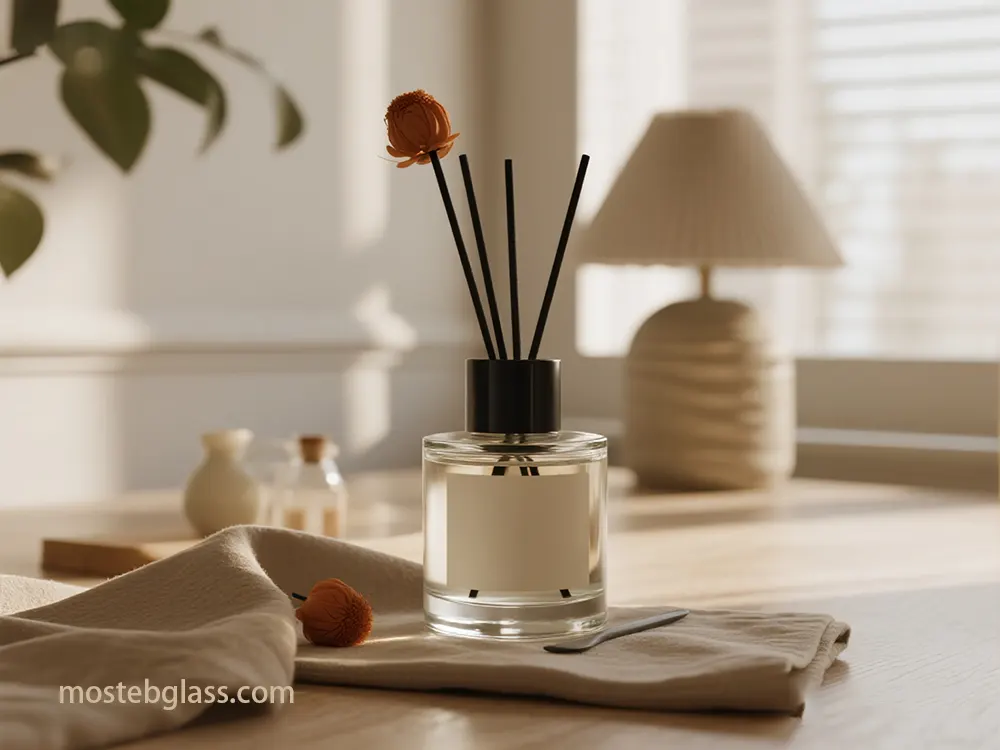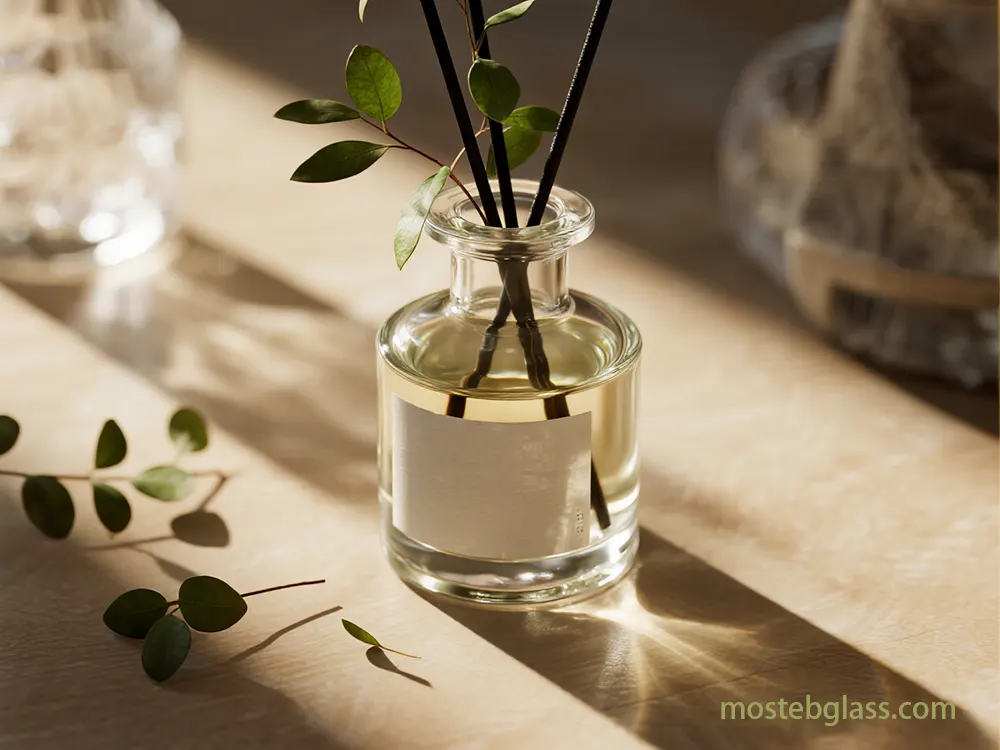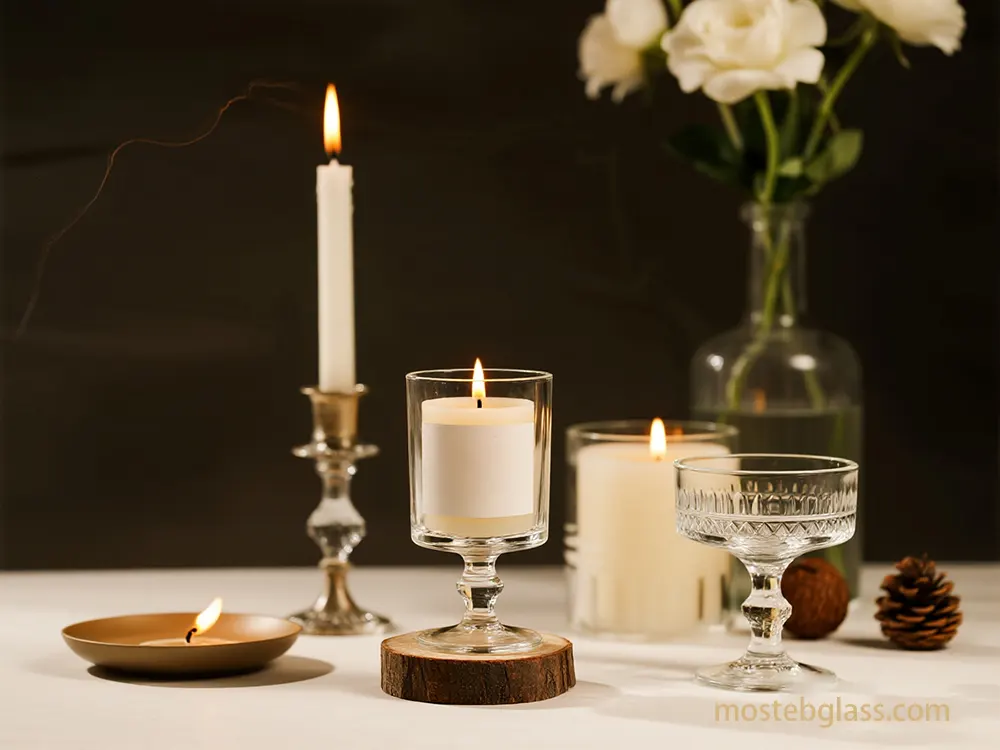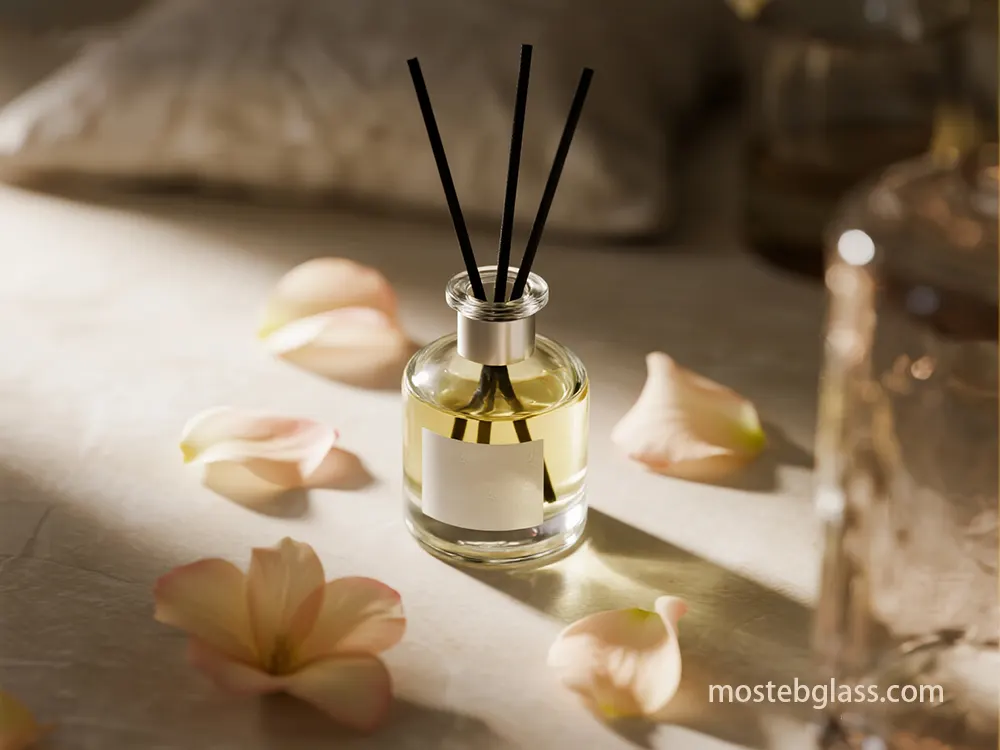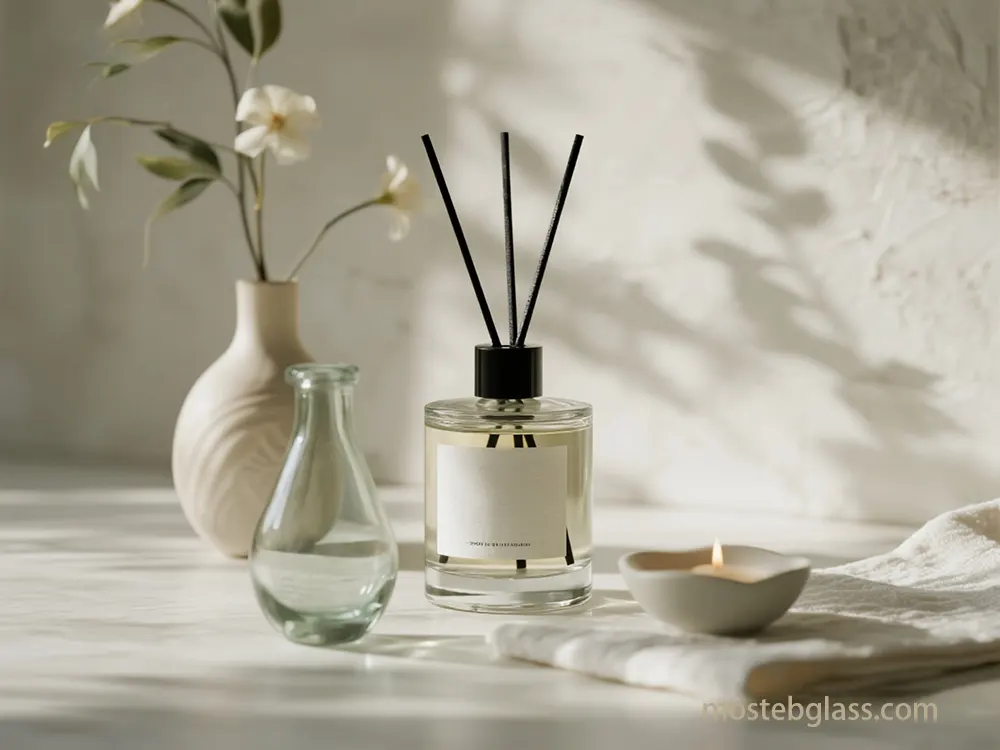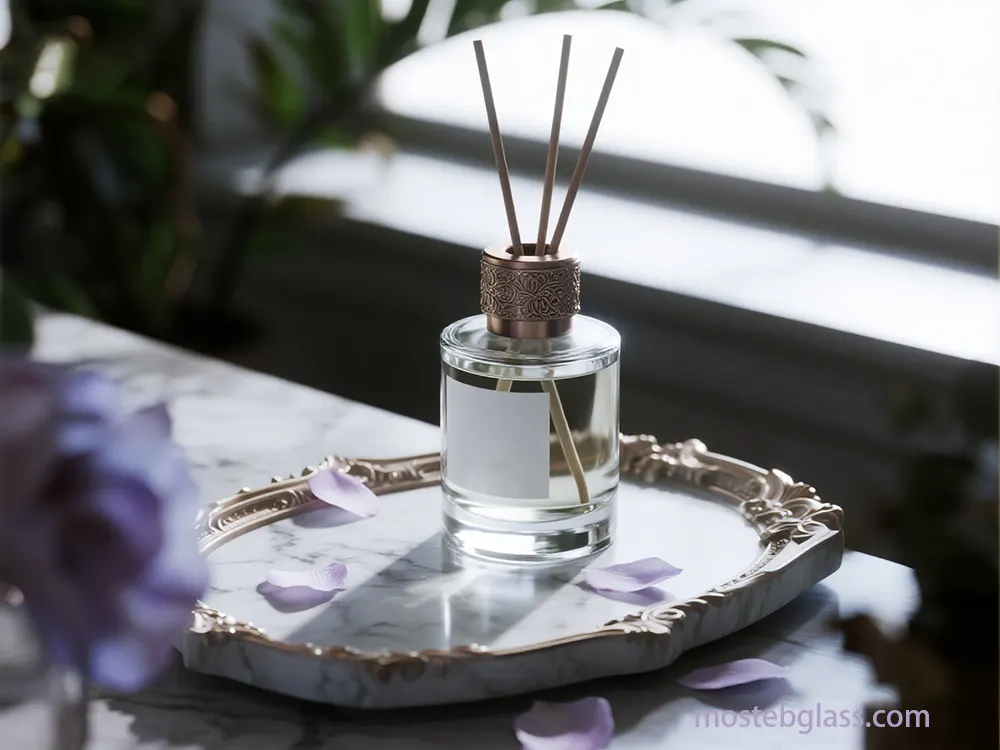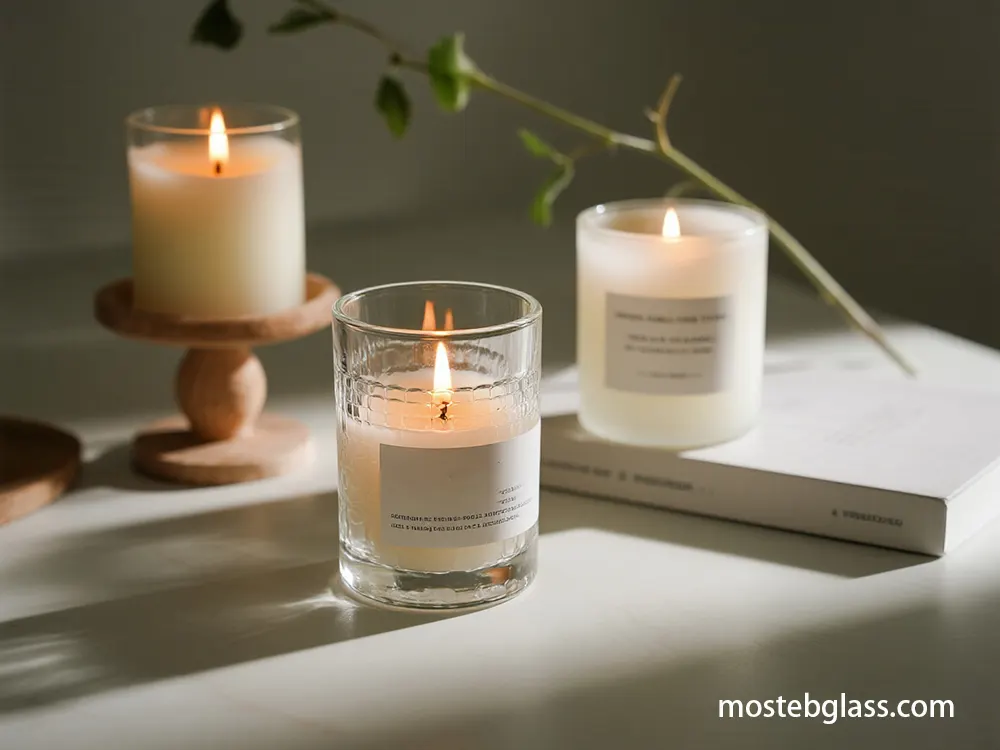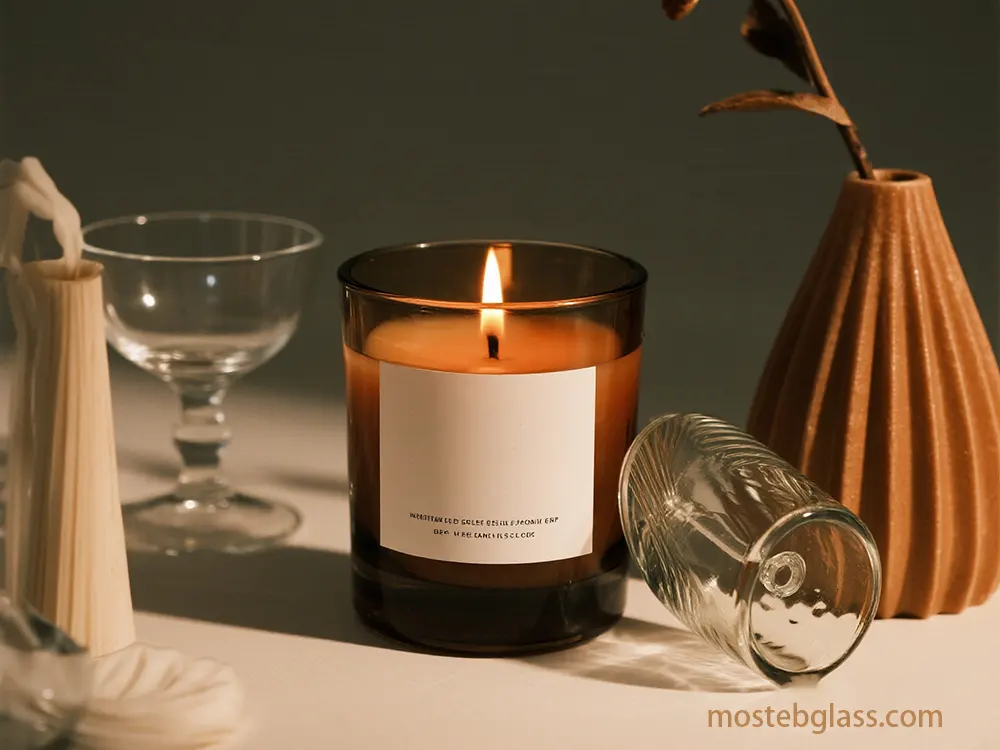2.1. Materialauswahl
Materialwahl beeinflusst tiefgreifend den sensorischen Eindruck, die Haltbarkeit und das Markenkonzept.
Glas:
Beliebt und flexibel, Glasbehälter zeigen das Kerzenlicht und die Farbe auf, sind leicht zu beschriften. Optionen umfassen Soda-Lime, Borosilikat (für hohe Temperaturen) und recyceltes Glas für Nachhaltigkeit.
Naturtonkrugbehälter vermitteln ein hochwertiges, handwerkliches, handgemachtes Gefühl. Langlebig, halten sie Wärme für eine gleichmäßige Verbrennung auf und können wiederverwendet werden, was mit Nachhaltigkeit übereinstimmt.
Metall:
- Leicht, langlebig und sehr recycelbar, Metallbehälter (Aluminium, Zinkblech) bieten moderne, minimalistische oder industrielle Ästhetiken, besonders geeignet für Reisekerzen oder hohe Schmelztemperaturen aufgrund der Wärmeleitfähigkeit. Schnell wachsend, biodegradierbar, Bambus verleiht ein ländliches, natürliches Gefühl und passt gut zu grünen Wachsen.
- Fast-growing, biodegradable, sustainable for lids or jar components. Biodegradierbare Behälter aus Sojawachs, Hanf oder Maisstärke bieten eine natürliche, zirkuläre Lösung.
- Recyceltes Kartonpapier und gegossenes Pulp schaffen leichtgewichtige, biodegradierbare, nachhaltige Optionen. Behälter aus nachhaltigen Ressourcen wie Zuckerrohr oder Mais.
- Lightweight, moldable, from renewable resources. Natürlich, nicht-toxisch, wasserbasierte Materialien schaffen moderne Beton-stilige Behälter. Eine richtige Versiegelung ist entscheidend.
- Mischen für feste, leichte weiße Behälter. Maßgeschneiderte Formen und Abgüsse sind entscheidend für spezifische Kerzenbehälter.
- Designed to break down naturally without environmental harm. Komplexe Glasbehälterformen erfordern fortschrittliche Abgussverfahren, die 3D-Modellierung, CNC-Fertigung und Abguss umfassen. Lost Wax Casting und spezielle Gipsabgüsse eignen sich für kleine Chargeproduktionen.
- Durable, lightweight, cost-effective for shipping, and recyclable. Beeinflusst direkt die Rundheit, glatte Oberfläche und Integrität des Behälters, mit schlechten Materialien können Mängel verursacht werden. Legierungselemente (z.B. Kupfer, Chrom) verbessern die Widerstandsfähigkeit und Lebensdauer des gegossenen Eisenabgusses.
- Sustainable, naturally biodegradable. Beeinträchtigt durch ungenaue Platzierung von Glasblöcken, Scherspuren, schlechte Abgussmaterialien/Oliven und fehlerhafte frühe Design.
- DIY und kleine Charge Abgüsse: Kleinere Unternehmen können upcycled Materialien (Glasbehälter, Karton, Kunststoff) verwenden. Silikonabgüsse (Silikonkleber, Maisstärke) sind kosteneffizient, flexibel, langlebig und nicht klebrig. ComposiMold bietet Wiederverwendbarkeit.
2.3. Oberflächenbehandlung
Oberflächenbehandlung veredelt haptisches und visuelles Verzauberung, beeinflusst das wahrgenommene Luxusgefühl und das Beste.
- Frosting: Mäßige Transparenz, die sanft für ein elegantes Erscheinungsbild diffundiert.
- Ätzen: Inschrift problematischer Stile, Designs und Symbole für stilvolle, dauerhafte Markenbildung.
- Metallisierung: Dünne Metallbeschichtung für hochwertige, spiegelnde oder matte Oberflächen. Farbbeschichtungen:
- Breites Spektrum an Farben, von Pastelltönen bis zu Edelstufen, die Atmosphäre schafft. Wasserbasierte Lackvarnish bieten Glanz und Sicherheit. Haptische Elemente:
Soft-touch matte Oberflächen oder Leinen Texturen verschönern die sensorische Erfahrung, vermitteln hohen Wert. Glättung deutet auf hohe Qualität hin.
Visuelles Design:
- Farben und Grafiken beitragen zur Wahrnehmung; z.B. Erdtöne für natürliche Kerzen, leuchtende Schatten für energiegeladene Duftstoffe. Weißraum verstärkt das wahrgenommene Luxusgefühl. 2.4. Integrierte EtikettierungsTechniken
- Etikettierung ist integraler Bestandteil des Brandings und kann nahtlos in das Design der Flasche integriert werden. Direktes Drucken:
Digitaldruck applies spezialisierte Keramiktinte direkt auf die Flasche auf, die während des Temperierens oder Brennens dauerhaft verschmilzt. Dies schafft langlebige, kratzfestere Designs mit feinen Details, breiterem Farb spectrum (Farbkombinationen, Gradienten, fotografische Bilder) und Flexibilität. Ink cups und Vibrantz Technologies bieten relevante Lösungen. - Etiketten: Vorgefertigte Designs oder Symbole als Etiketten ausgeführt, häufig gebrannt für Beständigkeit.
- Embossing/Debossing: Erzeugt auf Glas aufgewölbte oder eingedrückte Designs für ein raffiniertes haptisches, dreidimensionales Branding-Effekt.
- Hochwertige Etiketten: Maßgefertigte Klebeetiketten mit aufgewölbten Designs, minimalistischer Typografie und Stahlfolie Akzente verstärken das wahrgenommene hohe Preisniveau.
2.5. Maßgefertigte Sekundäre Verpackung
Sekundäre Verpackung ergänzt das Entpackerlebnis und unterstreicht Markenbotschaften.
- Materialwahl: Hochwertiges starres Karton vermittelt Luxus; nachhaltiges Kaffeebeutelpapier zeigt ökologisches Bewusstsein.
- Visuelle und haptische Elemente: Fenster Ausstechungen, mehrschichtige Texturen oder Stahlbeschichtungen schaffen Erwartung.
- Entpackerlebnis: Meticulously designed unboxing substantially affects emotional connection and perceived price, potentially enhancing perceived product cost by way of up to 45%.
- Functional Aspects: Structural integrity protects the candle in the course of transit. Features like custom foam inserts, dual walls, or UV coatings enhance durability.
3. Advanced Manufacturing Technologies Enabling Customization
Intricate, brilliant, and value-effective customization is driven by means of rapid advancements in manufacturing technologies, supplying greater layout freedom, precision, and performance.
- 3.1. Advanced Mold-Making Techniques Modern mold-making leverages state-of-the-art approaches for complex, unique, and repeatable glass paperwork.
- Precision CNC Machining: Creates fairly accurate, repeatable molds with elaborate details, crucial for specific shapes and regular first-rate.
- Specialized Mold Materials and Coatings: Advanced forged iron alloys with components (e.G., copper, chromium) enhance wear and oxidation resistance, extending lifespan and decreasing defects.Corrosion-resistant coatings in addition increase mould life.
- Rapid Prototyping for Molds: 3D printing gives quick, fee-powerful design iteration for molds (e.G., silicone, Jesmonite) before full-scale glass production.

3.2. Digital Printing
Digital printing has revolutionized glass surface decoration, presenting unheard of flexibility, element, and colour duplicate.
Direct-to-Glass Digital Printing:
Applies specialised ceramic ink at once onto glass, completely fused at some stage in excessive-temperature tempering or firing. This effects in durable, abrasion-resistant designs that face up to UV, chemicals, and wear.
- High Resolution and Color Gamut: Offers difficult details, wider colour variety, and greater flexibility than silk display printing, permitting full-shade, gradients, and photorealistic photos.Vibrantz Technologies offers appropriate inks.
- Efficiency and Customization: Streamlines production for quicker turnaround. Enables low-budget printing of one-off designs, small batches, and rather customized runs, making bespoke packaging handy.
- Curing Technologies: Modern printers use advanced ink shipping and green UV curing for quicker curing, reduced strength, and ink compatibility.
Equipment Manufacturers:
Inkcups (Helix®, Double Helix®) and Xaar printheads are key gamers.
- 3.3. Laser Etching Laser etching provides a precise, elegant method for adding intricate designs, logos, or text to glass surfaces. This non-contact process uses a focused laser to ablate or frost the surface, creating fine detail and a premium, permanent finish that conveys understated luxury.
- 3.4. Specialized Coating Applications Specialized coatings decorate each aesthetic attraction and practical houses of candle jars.
- UV Coatings: Enhance sturdiness, scratch resistance, and UV safety.
- Soft-Touch Coatings: Create a expensive, velvety tactile sense, improving unboxing and perceived value.
- Anti-Slip Coatings: Improve grip and protection, mainly for large jars.
Functional Inks:
Can impart homes like electric conductivity or energy efficiency for advanced glass packages.
3.5. The Potential Future Role of Additive Manufacturing (3D Printing)
Additive production (3-d printing), specially for glass, is an rising technology with substantial capability for prototyping and area of interest production of candle jars, imparting ultimate customization and design freedom for manufacturers like Mosteb.
- Technological Advancements: Include Direct Glass Laser Deposition (Nobula3D), low-temperature methods (MIT), Microscale Computed Axial Lithography (UC Berkeley), Glassomer Technology (LGM), Two-Photon Polymerization (UC Irvine), and fabric extrusion/direct ink writing.
- Design Freedoms: Creates complex shapes, tricky textures, and inner systems difficult or high-priced with conventional techniques, allowing precise designs.
- Prototyping and Niche Production: Promising for fast prototyping and small, exceedingly customized batches or excessive-cost area of interest merchandise in which exclusivity is prime.
- Glass-crammed polymers decorate properties.Recycled glass can be used as feedstock, selling circularity. Environmental Benefits:
Reduces material waste.Using recycled glass/geopolymers can cut CO2 emissions by way of up to 70%.
Challenges:
- May lack very excessive resolution.High-resolution business printers are high-priced, and material fees range, with better resolution growing print time/price. 4. Customization Strategies for Brand Differentiation Across Market Segments
- Different candle marketplace segments leverage customization to reap awesome emblem identities, enhance perceived price, and benefit competitive blessings, relying on course consumers, logo positioning, and production skills. 4.1. Luxury Market Segment
- Luxury producers prioritize exclusivity, craftsmanship, and an increased, multi-sensory enjoy. Materials:
- Detaillierte Audit und Due Diligence: Shapes and Textures:
- Unique and uncommon shapes (geometric, asymmetric) and reflective textures (frosted, embossed) upload special sensory entertainment. Finishes and Colors:
- A range of conventional hues (gold, silver, black, white) in steel, remarkable-gloss, or matte finishes offers a pleasant finished appearance. Frosted glass is a sophisticated splendor. Integrated Branding:
Custom labeling talents fashionable embossed designs, minimalist typography, and steel foil accents, reinforcing popularity and exclusivity.
Meticulously designed secondary packaging (high-end inflexible cardboard, layered textures, defensive inserts) for a memorable unboxing, contributing to perceived price.
Sustainability in Luxury:
Growing prioritization consists of reusable alternatives and sustainable substances, exemplified via Dior’s recognition on refillable luxurious.
- 4.2. Mass-Market Segment Mass-market brands focus on broad appeal, cost-effectiveness, and efficient production while differentiating.
- Standardized Customization:Uses standard jar shapes, customized via economical methods like vibrant color coatings, direct printing, or decals.
- Material Efficiency: Primarily glass, but may use more economical glass types or lightweight metal tins for specific lines (e.g., travel candles).
- Efficient Labeling: Digital printing offers cost-effective solutions for large runs, providing design flexibility without substantial cost escalation.
- Specialized Mold Materials and Coatings: Meets high MOQs for lower per-unit costs, requiring careful inventory management to avoid overstocking.
- 4.3. Artisanal and Small Business Segment Artisanal manufacturers emphasize uniqueness, hand made enchantment, and sustainability.
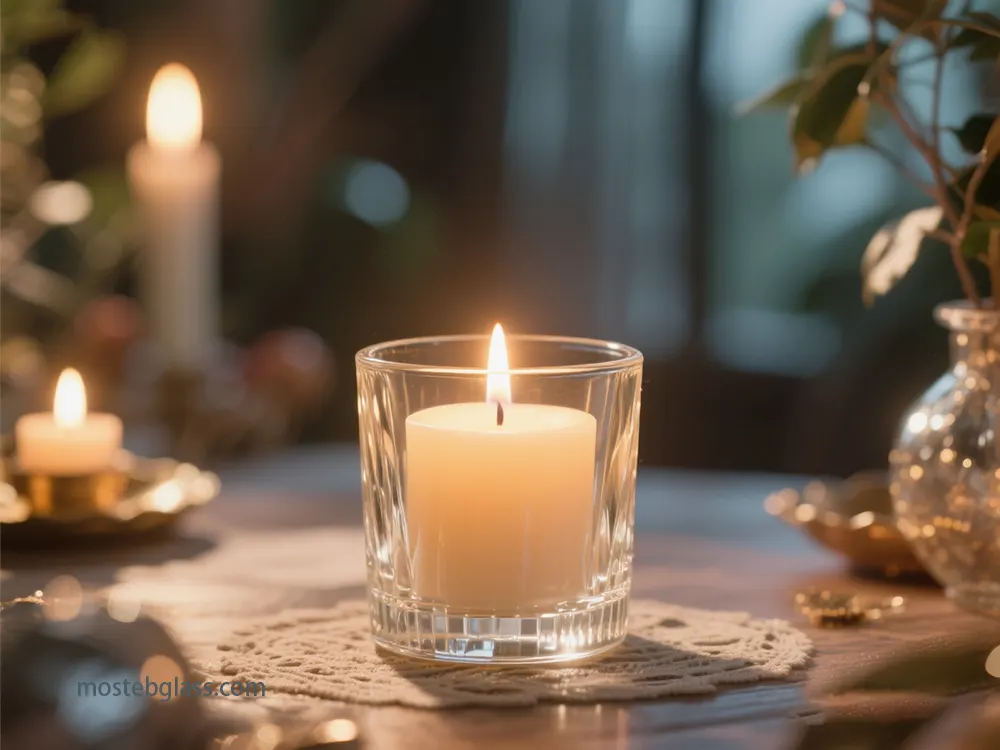
Flexible Customization:
Faces demanding situations with excessive MOQs (10,000-50,000 devices) and great upfront mould fees ($50,000-$a hundred,000) from custom glass producers.
- Solutions for MOQs: Partnering with specialized quick-run producers,collaborative purchasing,3-D printing for prototyping/niche designs,the usage of popular jars with custom labels,negotiation for flexible terms, and capacity modular layout strategies.
- Material Focus: Strong desire for green substances like recycled glass,artisanal ceramic, aluminum, bamboo, or upcycled coconut shells. Reusability and refillability are key.
- Authenticity: Designs often incorporate natural, earthy elements, complementing natural waxes and fragrances, sometimes with sustainable wooden wicks.
- 4.4. Eco-Friendly Segment This section prioritizes minimizing environmental effect throughout the product lifecycle.
Sustainable Materials:
Heavy reliance on materials with reduced environmental footprint: recycled glass ,ceramic, aluminum, bamboo, upcycled coconut shells, and plant-based bioplastics.
- Refillable Designs: Crafted for long-term, repeated use with wax refills, minimizing unmarried-use waste and selling a circular economic system.
- Production Processes: Emphasis on processes minimizing environmental harm, including low energy consumption (e.g., cullets in glass production), waterless dyeing, and efficient wax consumption.
- End-of-Life Considerations: Focus on responsible disposal: jar return programs,biodegradable coatings, and encouraging upcycling.
- Brands seek certifications like FSC, Cradle to Cradle Certified®, Green Seal, ISO 14001, EcoVadis, and B Corp to validate sustainability claims. Lifecycle Assessment (LCA):
Critical device to research environmental effect from raw material extraction to disposal, that specialize in reducing carbon footprint, waste, and emissions.
Mosteb can strategically function itself by way of leveraging advanced virtual printing for mass-market enchantment, exploring glass 3-d printing for special luxury collections, and prioritizing recycled substances and refillable designs for eco-conscious traces.
- 5. Quantifying Brand Differentiation Achieved Through Jar Customization Measuring the impact of customized candle jars requires a robust framework of methodologies and KPIs to assess ROI and optimize market position.
- 5.1. Defining and Calculating Packaging ROI Packaging ROI represents the financial return from strategic investments in packaging design,encompassing sales increases, customer satisfaction, loyalty, and profitability.
- A high ROI indicates effective revenue generation relative to packaging expenditure. 5.2. Key Performance Indicators (KPIs) for Packaging Differentiation
- Evaluating packaging ROI involves analyzing its impact across sales, cost efficiency, brand perception, and operational effectiveness. 5.2.1. Sales and Market Performance Metrics
- Wechseln Sie zu kooperativen Partnerschaften, die gegenseitige Vorteile durch geteilte Informationen und Expertise fördern.Dies beschleunigt die Innovation und verkürzt die Zeit bis zum Markteintritt. Tracking sales and revenue before and after packaging changes.
- Market Share Shifts: Monitoring changes to determine if packaging helps capture larger market share.
Premium Pricing Power:
Assessing ability to command higher prices for customized products, indicating enhanced perceived value.
Product Turnover Rate:
Measures how frequently products are sold, indicating consumer demand.
Customer Acquisition Cost (CAC):
Analyzing if differentiated packaging reduces new customer acquisition costs.
5.2.2. Cost Efficiency Metrics
Cost Per Unit (CPU):
Total cost of packaging each unit (materials, labor, overhead).
- Kosteneffizienz: Einsparungen durch kosteneffiziente Verpackungslösungen. Nachverfolgung von Materialabfällen während der Produktion.
- Betriebs Effizienz: Einfluss des Verpackungsdesigns auf Logistik, Handhabung, Lagerung und Reduzierung beschädigter Waren.
- Produktionszykluszeit: Zeit von der Bestellung bis zur Lieferung, Identifizierung von Möglichkeiten zur Reduzierung der Lieferzeit.
- Maschinenutzungsrate: Bewertung der Ausrüstungsleistung und Minimierung der Stillstandszeiten.
- Inventurumschlag: Aufrechterhaltung effektiver Lagerbestände und Optimierung der Verpackungseffizienz.
5.2.3. Markenwahrnehmung und Kundeng coinvolgungsmetriken
- Kundenzufriedenheits-/Feedback-Scores (CSS): Direkte Feedback zu Verpackungsanordnung, Ästhetik und Funktionalität.
- Net Promoter Score (NPS): Misst Kauferrientierung und Bereitschaft zu Empfehlungen, inspiriert durch Verpackung.
- Markenvisibilität und Regalansprech: Bewertung, wie gut die Verpackung heraussticht; Augenverfolgungsstudie misst sichtbaren Einfluss.
- Online-Einbindung: Überwachung von sozialen Medien-Nachrichten, Bewertungen und Entpackungs-Videos im Zusammenhang mit der Verpackung.
- Kundentreuequote und Wiederbeschaffungs-Häufigkeit: Verfolgung, ob unterschiedliche Verpackungen die Treue und Wiederbeschaffungen erhöhen.
- Produktausstellung: Wie effektiv die Verpackung das Produkt präsentiert und mit der Markenidentität übereinstimmt.
5.2.4. Nachhaltigkeitsmetriken
- Nachhaltigkeitsindex: Zusammengesetzter Metrik, die die Umweltauswirkungen von Verpackungsmaterialien und -techniken widerspiegelt.
- Lebenszyklusbewertung (LCA): Umfassende Umweltbewertung von der Wiege bis zum Sarg (CO2-Fußabdruck, Strom, End-of-Life).
- Materialbeschaffung: Verfolgung des Anteils an recycelten, erneuerbaren oder nachhaltig beschafften Materialien.
- Waste Generation and Recycling Rates: Analyzing packaging waste and recyclability rates.
- 5.3. Methodologies for Measurement A/B Testing:
- Evaluates customer sentiment by way of imparting special layout versions to distinct target market segments, isolating variables to degree overall performance. Consumer Research:
Qualitative/quantitative techniques (surveys, cognizance agencies) to recognize patron perceptions, preferences, and emotional responses to packaging.
- Market Testing: Compares real-international overall performance of different packaging designs in managed or stay market situations.
- Blind Tests: Presents programs with out brand statistics to gauge impartial choice.
- Eye-Tracking Studies: Neuro-advertising strategies to evaluate shelf impact and logo popularity by way of monitoring gaze patterns.
- Packaging Audit: Systematic analysis of packaging components and tactics to discover upgrades in efficiency, price-effectiveness, and sustainability.
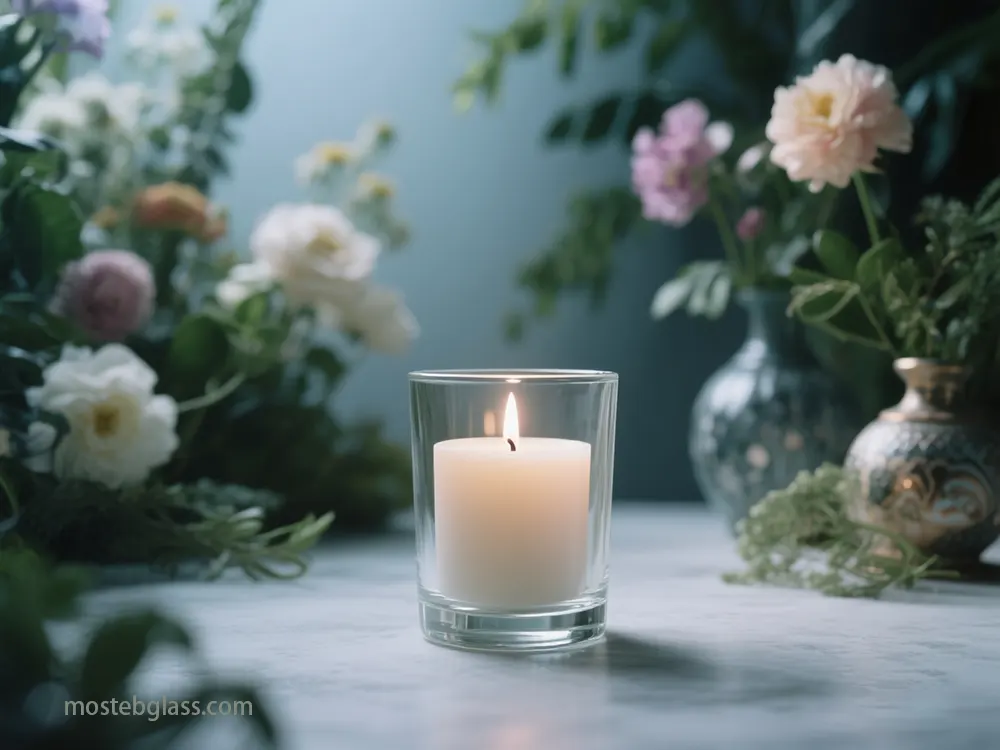
Data-Driven Decision Making:
- Continuously analyzes packaging overall performance metrics, which includes unboxing delight, return prices, and purchaser comments. Analytical Techniques:
- High-decision mass spectrometry for cloth high-quality, safety, and compliance. For Mosteb, integrating those KPIs and methodologies into a non-stop remarks loop is crucial for agile modifications, ensuring customization interprets into measurable logo differentiation, loyalty, and ROI.
- 6. Geographic Market Nuances and Consumer Perception of Customization Consumer notion of customization varies significantly throughout geographic markets, encouraged by means of regional alternatives, cultural contexts, and numerous expectations. Understanding these nuances is vital for Mosteb and other brands aiming for global resonance.
- 6.1. Regional Preferences and Aesthetic Trends Minimalist aesthetics:
- Simple strains, simple shapes, and neutral hues have become increasingly more famous global, mainly in markets within the West and urban facilities. Eco-pleasant substances:
- Our global markets (generally in Europe and North America) show off a growing call for for recycled glass, metallic, or biodegradable materials; reusability and refillability are important. Retro-inspired designs:
- Popular with clients searching for nostalgia and craftsmanship in markets with wealthy conventional histories, patterned glass, complicated designs, and traditional shapes are coming returned into fashion. Natural and Earthy Elements:
- Designs incorporating timber, stone, or terracotta benefit reputation, complementing natural waxes and fragrances, resonating in well being-targeted markets. Translucent and Colored Glass:
Creates warm ambiance when lit. Trends encompass tender pastels and vibrant jewel tones, popular for seasonal customization.
Material Preferences thru Region:
Glass jars are commonly desired globally.Ceramic jars provide a hand made aesthetic.Metal jars offer a cutting-edge-day, minimalist, or industrial aesthetic, appropriate for excursion.
Luxury Aesthetics:
- High-exquisite materials (thick glass, satisfactory porcelain), conventional colours (gold, silver, black, white), ultra-present day steel/matte finishes, and specific shapes universally imply high-priced, even though cultural interpretation varies. 6.2. Cultural Contexts and Consumer Expectations
- Cultural Symbolism: Specific colors, shapes, or motifs deliver profound cultural that means; customization incorporating those factors fosters authenticity and deep connection.
- Gifting Culture: In regions with strong gifting traditions, packaging emphasizing presentation, unboxing, and perceived fee is pretty effective.
- Sustainability Consciousness: Varies by using manner of region; European markets often have better expectancies and stricter rules.
- Brand Storytelling: Consumers reply in a special manner to logo narratives (ancient beyond vs. Innovation); customization lets in tailoring storytelling.
- 6.3. Impact of E-commerce The rise of e-trade amplifies packaging’s significance as a brand touchpoint. For online income, the unboxing revel in replaces in-keep interaction,necessitating great visual attraction in product photography, defensive and aesthetic internal packaging, and a meticulously orchestrated product screen. Packaging must additionally face up to transport rigors even as conveying luxury.
- 6.4. Regional Market Growth in Manufacturing Technologies Adoption of superior manufacturing technology varies regionally. Europe and North America preserve the most important market share for digital glass printing, while Asia, in particular China, indicates rapid boom,influencing supply chain choices for worldwide brands.
For Mosteb, a nuanced knowledge of those geographic variations permits for centered, culturally sensitive, and effective customization techniques, ensuring cultural resonance and assembly neighborhood consumer expectancies for aesthetics, capability, and sustainability.
- 7. Challenges and Future Outlook in Custom Candle Jar Manufacturing While customization offers vast possibilities, its implementation faces challenges. Understanding those hurdles and anticipating destiny trends is crucial for both candle brands and candle jar manufacturers like Mosteb to thrive.
- 7.1. Key Challenges in Implementing Advanced Customization Cost Implications:
- High prematurely mold fees ($50,000-$100,000+) are a major barrier for SMBs.Customization, specially for smaller runs, ends in higher in line with-unit costs because of fixed prices spread over fewer units.Inefficient production for complex orders can boom material waste. Extended Lead Times:
- Custom mold creation is lengthy (12-sixteen weeks).Intricate designs and specialised finishes necessitate multi-stage approaches, extending timelines and impacting marketplace responsiveness. Minimum Order Quantities (MOQs):
Glass manufacturers impose high MOQs (10,000-50,000+ devices) for custom-molded jars to amortize charges.Customization provides complexity to standardized manufacturing, doubtlessly leading to inconsistencies and slower deliveries.Larger volumes mitigate risks until manufacturing strains are subtle.
Skalierbarkeitsschwierigkeiten:
Hersteller, die sich auf besonders aufmaßgeschicktes oder kleinseriengefertigtes spezialisiert haben, könnten auch begrenzte Kapazitäten haben, die schnelle Skalierung erschweren. Die Wahrung der konstanten Qualität von kleinen bis großen Charge ist eine erhebliche Aufgabe.
Lagerverwaltung und Cash-Flow-Pressung:
Hohe Mindestbestellmengen können zu Überbeständen führen, wachsende Lagerkosten und Blockierung von Kapital.
Herausforderungen bei der Nachfrageprognose:
Die aufmaßgeschickte Natur von Kundenbestellungen macht die Prognose der Nachfrage schwierig, wodurch das Risiko einer Überproduktion oder von Lagerausfällen wächst.
Fortschritte in der Additiven Fertigung (3-d Druck):
- Glas 3-d Druck (z.B. DGLD durch Nobula3D, MIT’s niedrigtemperaturtechniken) wird zunehmend machbar, verspricht schnellen Prototypenbau, komplexe Geometrien und kosteneffiziente Kleinserienproduktion. 3-d gedruckte Formen (Silikon, Jesmonite) bieten Flexibilität für schnelle Layout-Neueinführungen und Kleinserienproduktion. Digitalisierung in der Fertigung:
- Die Integration von Industrie vier.0 (IoT, AI, ML) verwandelt die Glasproduktion für bessere Leistung, Flexibilität und Echtzeit-Optimierung.Digitale Zwillinge und Anlagenweite Automatisierung verbessern ebenfalls Arbeitsabläufe und Qualität. Nachhaltige Kundenbestellungspraktiken:
- Fokus auf umweltfreundliche Wirtschaftsmodell (Wiederverwendung, Recycling, Kompostierung, wiederaufladbare Designs).Forschung und Entwicklung in revolutionär nachhaltigen Materialien (pflanzlich, Bioplastik, recyceltes Material).Wachsende Bedeutung von Umweltzertifikaten (FSC, Cradle to Cradle, Green Seal, B Corp).Priorisierung einer geringen Umweltbelastung in Prozessen (Energie, Wasser, CO2-Emissionen). Hybridfertigungsverfahren:
- Zukünftige Produktion wird wahrscheinlich additive und konventionelle Verfahren integrieren, um Designfreiheit und Leistung zu optimieren. Kundenindividuierung im Maßstab: Fortschritte in der virtuellen Drucktechnologie ermöglichen extrem aufmaßgeschickte Kerzenbehälter (Namen, Nachrichten, aufmaßgeschickte Designs), wodurch unvorhersehbare Kundengagement ermöglicht wird.
- Für Mosteb ist es fundamental, diese aufstrebenden Technologien und nachhaltigen Praktiken anzunehmen, um wettbewerbsfähige Position zu erhalten.Strategische Investitionen in Glas 3-d Druck-Forschung und Entwicklung, Partnerschaften mit Schnelllauf-Produzenten und Priorisierung umweltfreundlicher Materialien werden Mosteb als visionären Chef etablieren. 8. Schlussfolgerung und strategische Empfehlungen
- Kundenbestellung in der Kerzenbehälterproduktion ist entscheidend für Marken differenzierung.Der Kerzenbehälter wirkt als ein mächtiger Markenbotschafter und beeinflusst Wahrnehmung, Preis und Kaufentscheidungen.Jede Maßeinheit der Kundenbestellung – Materialien, Endbearbeitungen, Formen, Etikettierung – trägt zur starken Markenidentität bei.Advanzierte Produktionstechnologien, insbesondere virtuelle Drucktechnologie und Glas 3-d Druck, erweitern ständig Möglichkeiten für komplexe, hochwertige und kosteneffiziente Kundenbestellung, indem sie Hersteller wie Mosteb befähigen. Jedoch stehen fortschrittliche Kundenbestellungen vor Herausforderungen: hohe Anfangsinvestitionen in Formen, verlängerte Lieferzeiten und hohe Mindestbestellmengen, die unangemessen kleine Marken beeinflussen.Navigieren dieser Komplexitäten erfordert sorgfältige Planung, innovative Partnerschaften und Investitionen in aufstrebende Technologien.
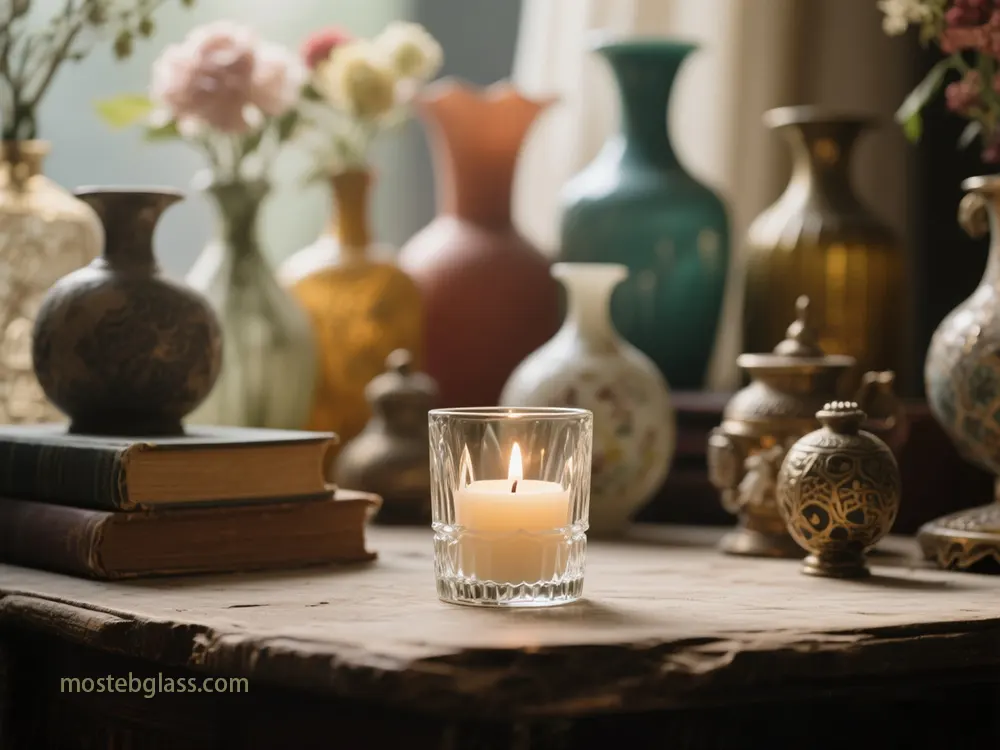
8.1. Strategische Empfehlungen für Kerzenmarken
Definition der Differenzierungsstrategie:
- Klare Darstellung des spezifischen Wertversprechens Ihres Markens (Luxus, Nachhaltigkeit, Handwerklich, Massenmarkt) zur Leitung der Material-, Form- und Produktionspartnerauswahl. Investition in Design und Mehrfachsinneserlebnis:
- Priorisierung fesselnder Ästhetik, haptischer Elemente (glatte Oberflächen, geätztes Glas) und des gesamten Unboxing-Erlebnisses, wobei Interaktion mit Duft und Verbrennungsleistung berücksichtigt wird. Nutzen Sie Digitales Drucken für Agilität:
- Nehmen Sie direkt auf Glas virtuelles Drucken für komplexe Details, leuchtende Vollfarbenbilder und schnellere Durchlaufzeiten an, um Flexibilität für saisonale/limitierte Variationen und personalisierte Produktionen zu bieten. Proaktiv Handeln bei Mindestbestellmengen-Herausforderungen:
- Schließen Sie strategische Partnerschaften für niedrigere Mindestbestellmengen; berücksichtigen Sie kooperative Beschaffung; ergreifen Sie modulare Design mit aufmaßgeschickten Endbearbeitungen; nutzen Sie 3-d Druck für schnellen Prototypenbau. Prioritize Sustainability:
Align customization with eco-friendly practices: opt for recycled substances, discover refillable designs, choose companions committed to strength-green, waste-lowering production, and speak transparently.
Understand Geographic Nuances:
Tailor customization to nearby possibilities and cultural contexts via marketplace studies, making sure relevance and recognition.
Quantify ROI:
Implement robust KPIs and methodologies (A/B testing, customer surveys, income facts, LCA) to measure tangible effect and economic go back, optimizing destiny investments.
8.2. Strategic Recommendations for Candle Jar Manufacturers
- Expand Customization Capabilities: Invest in superior production technologies: excessive-precision CNC mould making, cutting-edge digital printing (Inkcups Helix®), and complicated coating application structures.
- Innovate Mold Materials and Coatings: Dedicate R&D to new, excessive-overall performance mould materials and corrosion-resistant coatings to enhance mold lifespan, lessen defects, and beautify product pleasant.
- Develop Flexible Production Models: Cater to SMBs by means of exploring tiered MOQ systems, presenting devoted prototyping offerings, and investigating “glass on demand” or micro-manufacturing facility fashions for dynamic, price-green small-batch production.
- Invest in Glass 3-D Printing R&D: Invest in glass three-D printing research and development (e.G., Direct Glass Laser Deposition, Glassomer era), to advance, grow, and pilot glass three-D printing capabilities, that position Mosteb as a leader by offering great design freedom and fast prototyping.
- Embrace Industry 4.0 and Digitalization: Implement cutting-edge digital solutions (supply chain visibility, factory automation, digital twins) to improve workflows, shorten lead times, and maximize efficiency.
- Advocate Sustainable Manufacturing: Invest in methods that lessen environmental impact (reducing energy, water, carbon emissions) and receive environmental certifications (e.G., ISO 14001, EcoVadis) to showcase accountability.
- Offer Comprehensive Design and Consultation: Position Mosteb as a strategic associate via imparting expert steering on material desire, design feasibility, and value-powerful customization options.
8.2. Strategic Recommendations for Candle Jar Manufacturers
- Expand Customization Capabilities: Invest in superior production technologies: excessive-precision CNC mould making, cutting-edge digital printing (Inkcups Helix®), and complicated coating application structures.
- Innovate Mold Materials and Coatings: Dedicate R&D to new, excessive-overall performance mould materials and corrosion-resistant coatings to enhance mold lifespan, lessen defects, and beautify product pleasant.
- Develop Flexible Production Models: Cater to SMBs by means of exploring tiered MOQ systems, presenting devoted prototyping offerings, and investigating “glass on demand” or micro-manufacturing facility fashions for dynamic, price-green small-batch production.
- Invest in Glass 3-D Printing R&D: Invest in glass three-D printing research and development (e.G., Direct Glass Laser Deposition, Glassomer era), to advance, grow, and pilot glass three-D printing capabilities, that position Mosteb as a leader by offering great design freedom and fast prototyping.
- Embrace Industry 4.0 and Digitalization: Implement cutting-edge digital solutions (supply chain visibility, factory automation, digital twins) to improve workflows, shorten lead times, and maximize efficiency.
- Advocate Sustainable Manufacturing: Invest in methods that lessen environmental impact (reducing energy, water, carbon emissions) and receive environmental certifications (e.G., ISO 14001, EcoVadis) to showcase accountability.
- Offer Comprehensive Design and Consultation: Position Mosteb as a strategic associate via imparting expert steering on material desire, design feasibility, and value-powerful customization options.




